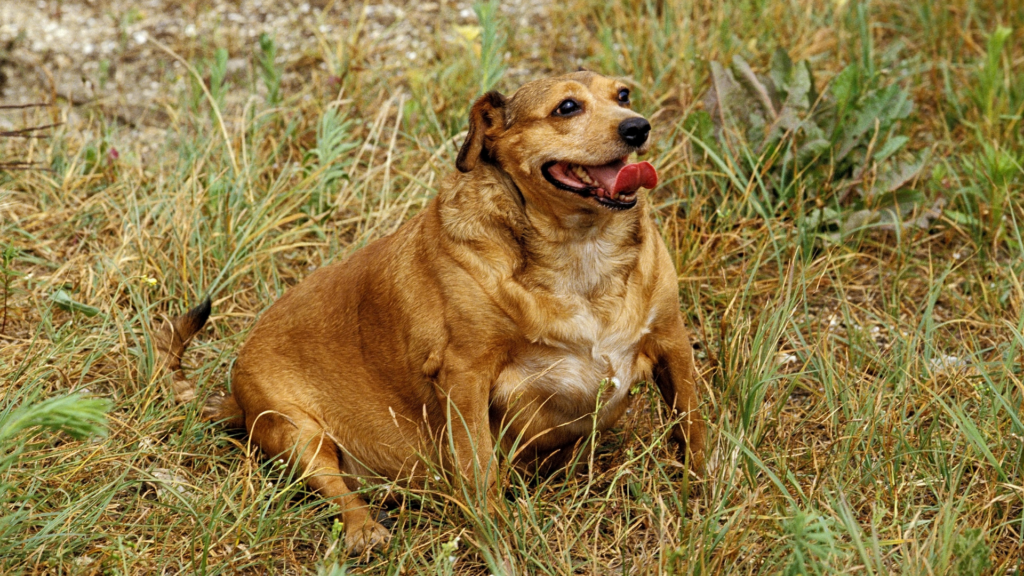Believe it or not, dog obesity is one of the fastest-growing health problems seen in dogs today, with over 56% of dogs being reported as overweight or obsese. While some health and genetic factors can cause obesity in dogs, oftentimes it’s simply lack of exercise and a poor diet that causes dogs to carry excessive weight.
So what can you do if your dog’s waistline is no longer visible? Don’t fear – with a few simple dietary swaps, a bit more exercise, and general awareness on your end, a healthy weight for your dog is achievable.
What Causes Dog Obesity?
Just like humans, some dogs are more prone to obesity, while others manage to stay lean thanks to a fast metabolism. Certain breeds, like English bulldogs, beagles, pugs, and dachshunds are some of the most notable breeds that carry obesity in their genes.
However, there are outside factors that can cause obesity in dogs, with the most obvious being poor diet and lack of exercise. If your dog is eating more calories than they can burn, they’re likely to have weight issues. Additionally, senior dogs are more prone to obesity due to the normal decrease in their ability to exercise, and arthritis and other conditions associated with old age.
How to Treat and Manage Obesity in Dogs
While obesity in dogs can indicate underlying health issues, such as hypothyroidism and diabetes, carrying a few extra pounds can also have serious health implications for your pup. Along with a reduced life span, additional weight can impact your dog’s quality of life by impacting their ability to run around, have energy to play, and can even impact their mood.
If your dog is obese, you can help get them back on the path to good health. A few simple lifestyle and diet changes can have your dog back on track to reach, and maintain, their target weight.
- Know Their Healthy Weight
It may sound obvious, but the first step in helping your dog tackle obesity is to know what their ideal healthy weight is. If you’re not sure, you can consult your vet, who can give you a target weight along with a weight loss plan to help your dog get back on track. This typically includes a diet change to a lower calorie, weight-controlled food, and smaller portion sizes. - Keep Them Active
You know if you want to lose weight, you need to exercise more, and the same goes for your dog! Experts recommend at least 30-minutes of walking each day for dogs, and up to three short play sessions to keep their energy levels high (and the calories burning!). - Limit Treats (including table scraps)
We get it – it can be hard to say no to those puppy eyes begging for a treat or a bite of your dinner, but their health comes first. Limit treats, including table scraps which are high in calories, to help keep your pup’s weight in check.
Pro Tip: For a healthy, crunchy treat, swap out high-calorie milk bones for baby carrots – a tasty snack for your dog to enjoy between meals! - Track and Measure Progress – and Stay Consistent
Just like humans, owners of dogs on a weight loss regimen should track and measure their progress against their weightloss goals. Check in on your dog’s weight by visiting your vet regularly, and you can even use a tape measure to monitor progress on fat loss.
Keep in mind that, once your dog reaches their healthy weight, it’s up to you to help them maintain it. Stay consistent with their proper portion sizes, regular exercise, and limited treats to help them maintain their ideal weight and overall health.
Remember, while your pup can’t control how much they’re fed or exercised, you can. And thankfully, with a few strict policies in place, your pet will be back on track to achieving a healthy weight in no time!



You might want to mention to find out if your dog has an underlying condition – such as cushings disease/syndrome. One of my dogs had it, it was undiagnosed, and contributed to her dying earlier than she should have if we had known so it could be treated. Just takes a blood test; who knows if other issues might be discovered as well. Often just a clinical exam won’t show if a dog has cushings; best to have a blood test done just to make sure.